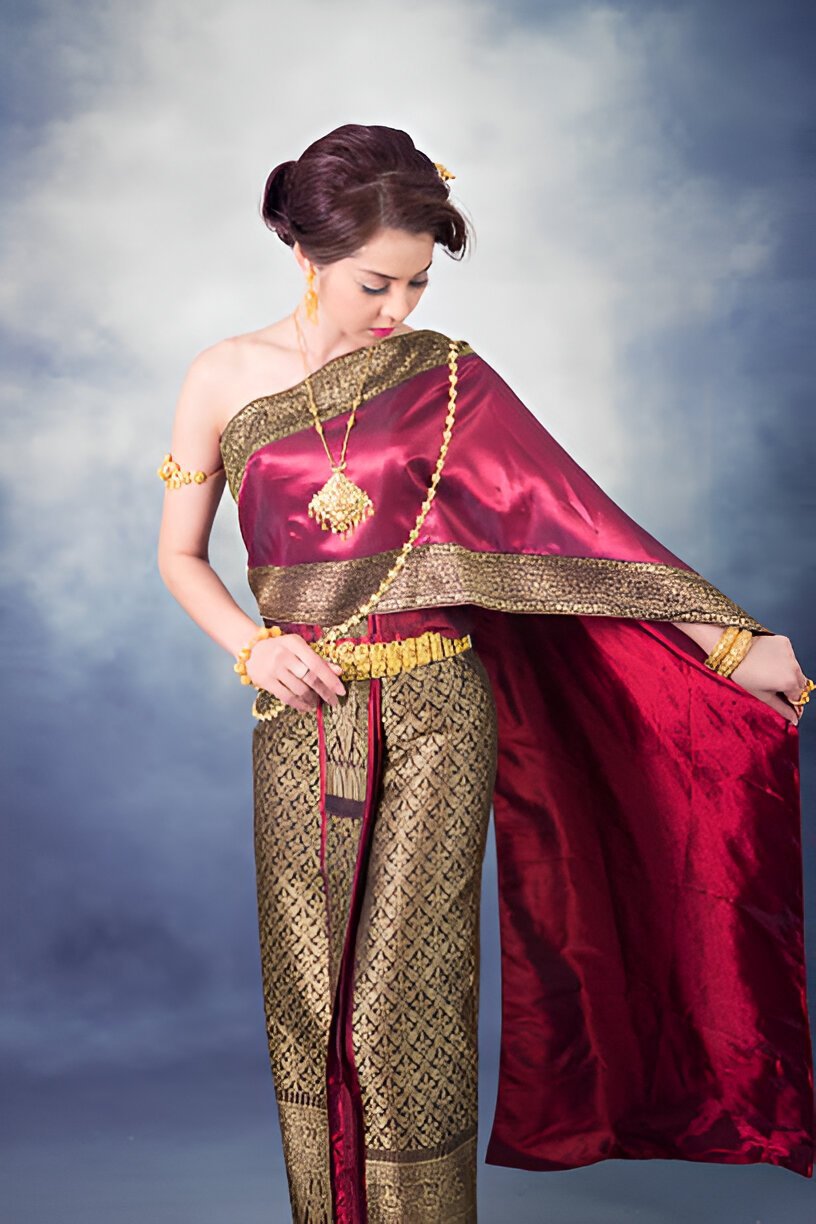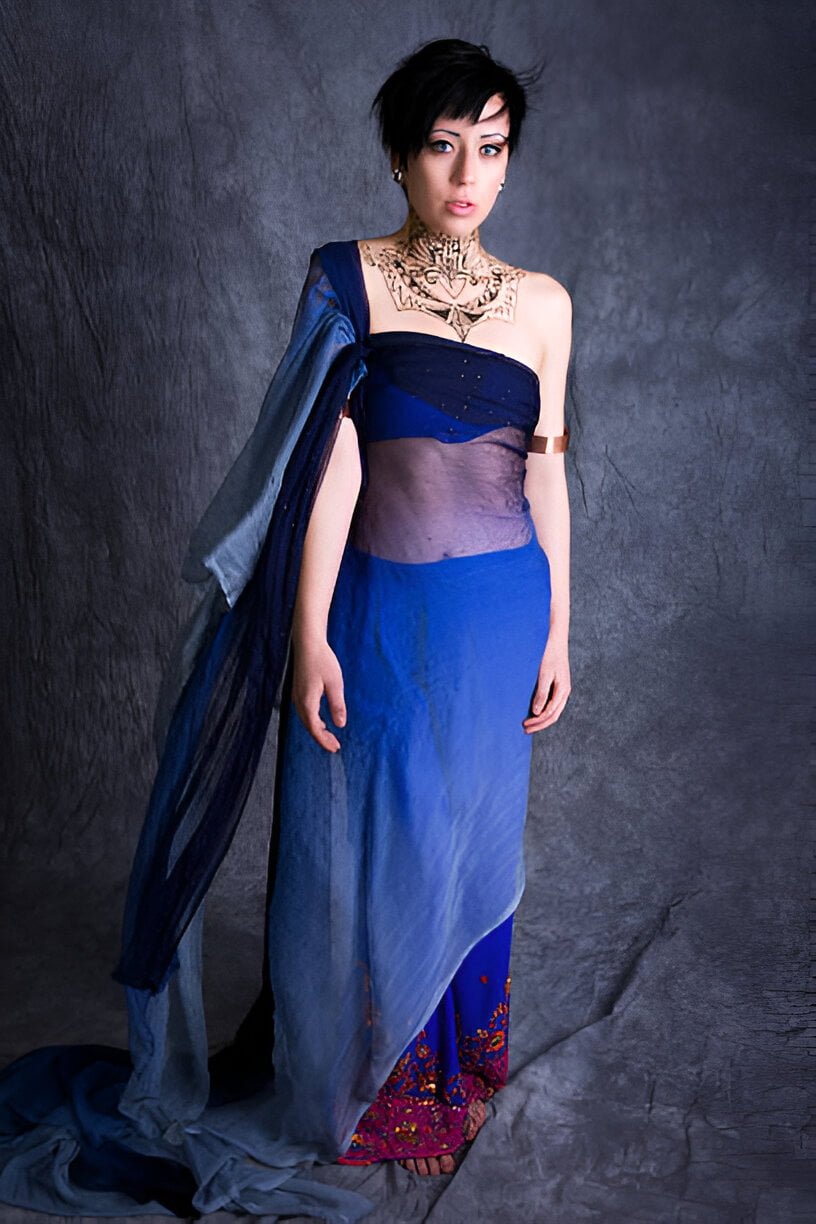Bollywood Inspired Half Saree Dupatta Looks You’ll Love

Half Saree Dupatta: Ageless Tradition with Indian Women
South India has its own traditional apparel that is still popular today. The half saree, also known as “Langa Voni” in Telugu, “Pavadai Davani” in Tamil and “Langa Davani” in Kannada is one of them. This dressing style looks incomplete without the perfect draping of dupatta which represents a girl’s coming of age. It reflects cultural heritage and refinement combined with fashion trends having made it popular among several Indian women.

History and Culture
Ancient Origins
The origins of this dress can be traced back to several centuries ago when it began featuring prominently in ceremonies as well as rites of passage throughout South India. A typical young girl dressed up with a three-piece outfit, made up of the blouse (Choli), the skirt (Langa or Pavadai) and the dupatta (Voni or Davani), signifying her readiness for maturity.
Bridal Dupatta Designs That Will Make You Shine on Your Big Day
Culture Symbolism
In a half saree set-up, the dupatta is more than just an embellishment but portrays modesty and gracefulness. How one puts on their dupatta signifies where they come from within the region or community, thus representing cultural identity of the wearer. Fabrics, colors chosen and decorations used are important factors denoting specific cultures and families indicating social standing as well occasion.

For example, bright colors such reds, yellows and greens are usually worn on special occasions such as festivals or weddings while less bold shades like blues or pastels may be meant for casual events. Moreover, particular motifs or embroidery designs can show regional practices and family lineage respectively thus endowing much individuality upon this garment; hence making it culturally significant.
Modern Development & Popularity
Existing Trends
Half saree dupattas have evolved while keeping their traditional essence intact even though fashion changes continuously. Modern designers explore diverse fabrics like silk, chiffon, georgette and net with intricate embroidery work, sequins or beads as well. Younger generation is into these styles because they mix up western fashion with traditional outfits.
One of the significant changes is that now half saree dupattas come in different shapes and sizes making them more versatile for different occasions. The old-fashioned floor length skirts have been replaced by modern structured ones whereas the blouse has developed into a crop top design or an off shoulder style. In addition to maintaining its cultural importance, a dupatta can be tied differently in order to give a contemporary twist to this age-old attire.
Bollywood & Fashion Icons’ Influence
The films from Bollywood made people everywhere in India wear the half saree dupatta. Actresses like Deepika Padukone, Alia Bhatt & Anushka Shetty have been seen donning half sarees on screen and public appearances motivating young girls to incorporate such traditional clothes in their wardrobe with a modern touch. Social media influencers also played major roles in the comeback of the half saree dupatta by presenting various styling techniques and guidelines.

During this time, Bollywood has contributed immensely towards making the use of half saree dupatta more fashionable during other not just traditional events. Such trends are often inspired by movies of Bollywood which makes it possible for designers to create stylish and trendy half saris that can cater for today’s taste while still retaining its originality.
Tips on how to Stylishly Wear a Half Saree Dupatta
The half saree dupatta has many styling possibilities that can adapt to different occasions and personal choices. This is how you can make the most of it:
Conventional Draping
For a timeless classic look drape the dupatta over one shoulder and let it fall smoothly around your waist. This traditional style is best suited for cultural ceremonies, religious functions and family gatherings. Add some traditional jewelry like jhumkas, bangles, and bindi to finish off the ensemble.
A Modern Twist
To give your half saree dupatta a modern look, try out various drapes. You may pleat the dupatta and fasten it with a trendy belt so that it creates a structured and contemporary silhouette. This design works great at college events, parties or casual meetings where you want to look chic without compromising tradition.
Mix And Match
Play around with contrasting colors and materials in order to achieve an interesting distinct appearance. Pair plain skirt and blouse with heavily embellished dupattas or vice versa for a balanced fashionable outfit. Combining different textures while mixing patterns can also offer more depth as well as interest in your attire.

Accessorize
Statement accessories can really enhance the overall appeal of your half saree dupatta. Some choker necklaces, belts for the waist or ornate hair pins will add glitz to this customary wear. On this note, take up items that go well with the colors plus designs of your dress but don’t mind trying something outrageous or way too conspicuous.
Celebrate sustainability and local artisanship.
Fabrics weaved by hand and dyed with natural colorants.
This is not an indicator of the use of half saree dupatta in sustainable fashion. Furthermore, using handloom fabrics and vegetable-dye can also be a strategy to conserve the environment. By choosing to buy half-sarees that are hand-woven, you therefore help to conserve traditional weaving methods as well as maintaining skilled workers’ lives.
Handwoven fabrics such as Banarasi silk, Kanjeevaram silk and cotton are renowned for their durability, texture and intricate designs. These materials are often dyed using plants, flowers or minerals which make them environmentally friendly dyes. Use of natural dyes also gives out distinct colors that have cultural meaning in the society.

Back local artisans
The rebranding campaign implemented has played a significant role in raising awareness on half saree dupatta once again. In addition, this traditional dress has come back into vogue thanks to fashion shows, cultural events and social media influencers who made it popular with today’s youth. Buying locally woven and handmade half saris means that one helps preserve traditional craftsmanship while promoting livelihoods of locals engaged in producing these products.
The makers from different parts of India have maintained their specialised skills which they passed down through generations. The craft persons employ techniques like loom-weaving, hand embroidery and block printing to come up with unique intricate designs. By choosing handmade half sarees you get a garment that is both one-of-a-kind and made with quality workmanship; moreover it also supports sustainability and growth among artisan communities.
Various kinds of duvet covers half sindhi duppattas
South Indian region has several variations depending on where you find yourself The following are some examples:
Andhra Pradesh & Telangana – Langa Voni
In Andhra Pradesh and Telangana states known as Langa Voni. Usually the colors are bright and are highly embroidered incorporating motifs and patterns of tradition. The Voni, which is a kind of dupatta, is draped around the waist over one shoulder giving it a very elegant look. Many people wear Langa Voni during festivals like weddings, cultural events among others.
Tamil Nadu – Pavadai Davani
In Tamil Nadu it is called Pavadai Davani. This dress is made from rich silk material such as Kanjeevaram and Pattu silk with elaborate zari work and embroidery done on them. The outfit appears in form of davani/ saree pallu draped on the dupatta that adds to its beauty and elegance. Majorly worn during religious ceremonies, temple visits or family functions.
Karnataka – Langa Davani
The half sari in Karnataka is known as Langa Davani. A combination of both silk and cotton fabric are used for this type of clothing with traditional Mysore silk borders & motifs often being present. On their part, after putting it on their body they drape the same on their shoulder so that it also goes down to waist besides making them appear structurally built up & graceful. Langa Davani costume is usually worn during festivals, cultural functions, etcetera.

Festivals and Celebrations – The Half Saree Dupatta
Navaratri and Dussehra
Navaratri and Dussehra are major festivals of South India celebrated with great devotion. Young girls and women often wear half sarees during such festivities, which symbolize tradition and festivity. The vibrant colors and the intricate designs on the half saree dupatta make it a preferred choice for these occasions thus making them full of fun.
Women frequently dress in new colours every day during Navaratri to represent different forms of goddess Durga. The versatility of the half saree dupatta is complimented by its different shades that are appropriate for this practice. This apparel is usually decorated with traditional motifs, mirrors, or embroideries to add a touch of celebration to it.
Weddings and Pre-Wedding Ceremonies
During weddings as well as pre-wedding ceremonies like engagement parties, haldi (turmeric) ceremonies, mehndi functions etc., wearing a half saree dupatta has been popularized among many women. It is appropriate for such sacred occasions since it maintains an ethnic look as brides, bride’s maids keep pace with fashions on the occasion.
The colorfully designed half saree dupatta often comes in silk materials with zari work, sequins or beads as part of wedding outfits. It is common knowledge that weddings should be colorful signifying fertility and joy as such this colour pattern is utilized most times. In addition, bridesmaids’ dresses mostly match their counterparts’ in terms of patterns and hue combinations.
Festivals and Religious Ceremonies
Various festivals including Pongal, Diwali, Ugadi etc., also see people clad in the half saree dupattas. These celebrations are generally marked by traditional rituals, food music dance hence; adding more sparkle to mark dancing holidays than ever before -highlighting how important the half saree dupatta has been in all this. The cultural significance and lively colors of this outfit make it a favorite option for most people during these festivities.

In Pongal, women often wear half sarees which are made of cotton or silk with traditional motifs. This is the symbolism of draping the dupatta over shoulder to show that there is a lot to celebrate; an expression of plenty and prosperity. Similarly, in Diwali or Ugadi, half sarees selected by ladies contain fine embroidery as well as decorations denoting festivity.
The Future of the Half Saree Dupatta
Fusion Fashion
The future of the half saree dupatta lies on sustaining its traditional roots while still being able to embrace changes in fashion. A fusion fashion that encompasses both traditional and modern aspects is being adopted by young generations today. Hence, there are various designs for half saree dupattas including contemporary cuts, styles and materials that target different types of buyers.
For instance, instead of having a usual blouse one can go for a crop top or an off-shoulder top which would give a more modern appearance to it. Additionally, skirts can be designed into high-low hemlines or flared silhouettes making them more versatile and trendy. As such, some new ways have emerged like folding scarf-like around neck or pleating and fastening it with belt so as to look stylishly elegant when wearing this dupatta.
Embracing Inclusivity
Moreover, the garment is transitioning towards becoming more inclusive with regard to age range as well as body shape differences among women who wear it. Different body sizes can be accommodated by stretchable fabrics, adjustable waistbands, and tailor-made patterns thereby promoting comfortability throughout its use period on all individuals who put it on alike.
Even the selection of colors, patterns and motifs reflects inclusivity. A wider range of colors being explored by designers has allowed for use of pastels as well as bold, vibrant shades that enable women to communicate their individuality and personal style. Incorporating diverse motifs and embroidery patterns from varied regions in India also helps celebrate the rich cultural heritage and diversity of the country.












